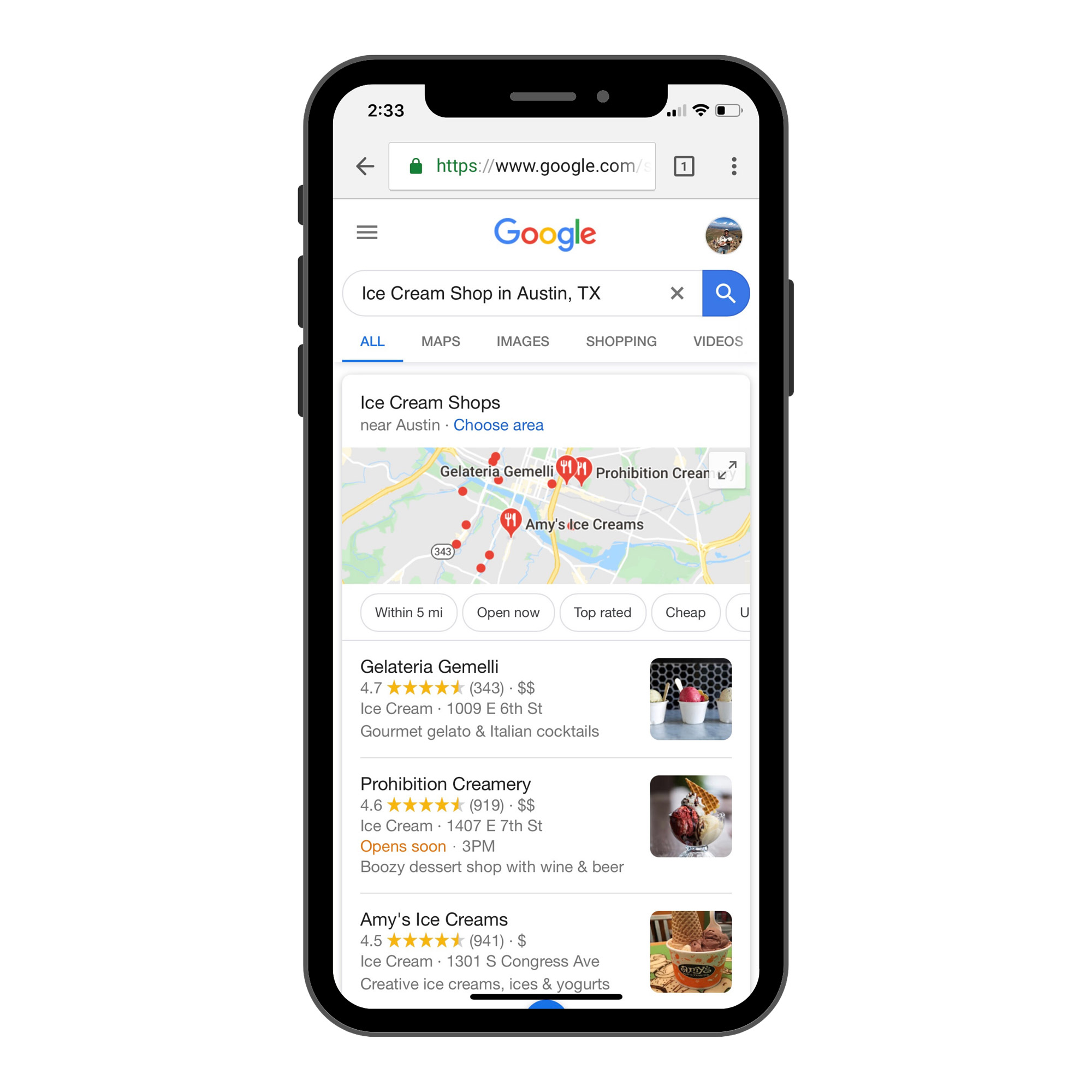How to optimize local SEO to grow your pet sitting business
For any Pet Sitting Business that wants to expand, you can’t go wrong with investing in Search Engine Optimization. Here at Time To Pet, one of the goals of our pet sitting software is to automate a lot of the everyday tasks of your business (like invoicing, scheduling, and getting paid) so you can focus on working on your business instead of in your business.

One of the keys to growing your business is increased visibility. According to Wikipedia — SEO is the process of affecting the visibility of a website or a web page in a search engine’s unpaid results — often referred to as “natural,” “organic,” or “earned” results. Essentially, SEO helps you move up Google’s search results when a potential client searches for a “pet sitting company near me.”
SEO is one of the largest and most complex internet marketing strategies out there. Therefore, we will focus on more of a beginner’s guide to local SEO. Local SEO is essentially the same thing as SEO, but it is focused on providing results to the searcher based on their location. For example, if I’m in Boston and I search “Dog Walking Company,” results for a dog walking business in Los Angeles don’t help. In this series, we’ll touch on some high-level ideas, best practices, and a bunch of helpful tips and tricks.
Local Listings
Think of Local Listings as the Yellow Pages of the modern era. Just like how you may have flipped through the phonebook looking for a good plumber a decade ago, your clients are flipping through the world wide web looking for a dog walker or a pet sitter today. Luckily for you — there are a ton of virtual “Yellow Pages” available, and the vast majority are free! All it takes is some time, and you can list your business on all of them.

One of the most essential listing sites is none other than Google. Google My Business, to be exact. Google My Business will walk you through the signup process and should take less than 10 minutes. When you are all done, it will be easier for customers to find you in Google Search Results, and they’ll be able to find you on Google Maps too. Google makes it as simple as possible with easy step-by-step instructions.
While Yelp is the industry giant in customer reviews — its core is as a listing service. If you haven’t signed up for Yelp yet, then check out our Yelp 101 blog post. While you’re at it, make sure you are on Facebook too! Here is our Facebook 101 blog post.
Yahoo! and Bing are two great places to get listed as well. Yahoo! has a couple of paid offerings, but you can always choose their Basic Listing for free. Bing offers listing services for free and makes the process as pain-free and straightforward as possible.
Some others that you can check out are Foursquare, Merchant Circle, and Whitepages.
One thing to keep in mind — consistency is key. Make sure your business name, address, phone number, website, etc. are the same on all of the listings. These should match up with what you advertise on your website as well. You may not see the results right away, but getting listed on these sites is building the framework for a very successful SEO campaign and a very successful business!

Reviews
Now that you’ve listed your business on Google, Yelp, Facebook, and the other listing services, it’s time to shift your focus to reviews. Reviews come in a lot of different forms. Say you are looking for someone to mow your grass — you may ask your neighbor who has an immaculate lawn. Their recommendation for Bob’s Lawn Care is a review. When it comes to people looking for a pet sitter or dog walker — a lot of your clients may be new to the area and plus — you can’t tell that your neighbor has a great dog walker by looking at their lawn. Luckily for us — the internet has revolutionized the way clients write and read reviews.
While Facebook, Google, and most of the listing services provide reviews, Yelp is the industry giant. If you are looking for a great Mexican restaurant, it’s safe to assume you can check Yelp for some honest feedback. As you would expect from a company that manages reviews, Yelp is incredibly focused on providing trustworthy information to consumers. With that being said, requesting reviews from your clients is never a good idea. Yelp has automated software that is used to help users distinguish from real and fake (or solicited) reviews. While the software isn’t perfect (sometimes a real review will not be recommended), it does a great job leveling the playing field for small businesses.

So if you can’t request reviews, how do you get them? Well, Yelp suggests saying things like “Check us out on Yelp” or adding a Yelp badge to your website. You can even add a link to your email signature to make sure your clients don’t miss it (and while you’re at it — don’t forget to add a link to your Facebook and Google page too). For more information, check out Yelp’s support page on Reviews.
Now that you’ve gotten your first review — it’s a good idea to reply. Whether that is saying thank you to a positive review or addressing the dreaded negative review, Yelp suggests keeping these three things in mind when responding. First, reviewers are your paying customers. Second, your reviewers are human beings. And lastly, your reviewers are vocal and opinionated. Responding to negative reviews should be handled with care and, if done the right way, can sometimes turn an unfortunate situation into something positive. Yelp has excellent guidelines on responding to reviews too! If you haven’t claimed your Yelp business page yet, check out our blog on Yelp here.
Reviews on Google and Facebook can be handled much in the same way you handle Yelp reviews. Remember — with companies like Yelp, Google and Facebook making it so easy for your customers to talk, it’s important to be a part of the conversation!
For more information, take a look at our Time To Pet Academy lesson on How Pet Sitters Gather Reviews and Creating A Pet Sitting Referral Program.
Social Media
Who would’ve thought that Social Media was used for more than sharing funny cat videos? While Facebook or Twitter make great platforms for those videos — they are much more important than that. Any strong SEO strategy for a pet sitting or dog walking business includes a significant focus on Social Media. SEO and Social Media actually go hand in hand. Think about it — your goals for your website include getting new clients to view what you have to offer and getting them to contact you. While your Social Media goals might be more about brand awareness and customer engagement — the end game is always to get more people to consider your company.
Before thinking about Social Media strategies, you need to first think about which Social Media platforms you want to invest in. The key questions to ask yourself are, “Where are my customers?” and, more importantly, “Where are my customers active?” Having a presence on Facebook (with nearly 2.5 billion active users) is always a safe bet. If your business is not on Facebook yet, check out our Facebook 101 post. Depending on the amount of time you can commit to Social Media, you might also want to consider Twitter, LinkedIn, Google+, Pinterest, Instagram, and YouTube.

Now that you’ve decided on which Social Media platforms to use, let’s talk about some of the benefits for your pet sitting business. It addition to increasing your SEO, a commitment to Social Media helps your brand recognition, helps better understand what your clients (and future clients) are saying, helps establish you as an industry expert, and helps grow your business!
One of the most important aspects of Social Media is your number of followers. There are some shortcuts (like buying followers); however, Google can detect “fake” followers. Unfortunately, growing your follower base can be a lengthy process, and it’s always best to grow your following organically. As long as you provide great content to your followers — your audience will continue to grow. But remember — just as important as growing your following is interacting with them as well!
Next, Social Media is a great tool to share some of your content. We’ll get into more detail about content and link generation, but in essence — the more people who link to your content (and your website), the more authority your page will have on Google. When you release a new blog post, share it with your followers. Hopefully, they will share it with some of their followers too! It’s important to remember that the quality of your content is most important here.
Social Media makes it incredibly easy to share with people across the world, but there is still a local focus. While you may have international goals for your pet sitting business, it all starts on the local level. Try and interact with some other local brands on Social Media. Every time you attend a local event, post pictures from it, and encourage others to interact post, comment, and share too!
Social Media is a vast topic, and we’ve only begun to scratch the surface. For more detailed information, check out The Ultimate Guide to Social Media Marketing for Local Businesses written by Neil Patel or do a quick Google search on “Social Media SEO.”

SEO Optimization
Last but certainly is SEO Optimization. Besides being incredibly important to your SEO strategy, one thing the previous three topics have in common is that they occur off of your site. Because SEO Optimization occurs on your website — it can be much harder to master. But don’t worry, we’ll spend some more time talking about how to optimize your own site to make it easier and more appealing for search engines to find.
Because optimizing the SEO on your own website takes some technical skill, we will provide a fundamental overview of some best practices. We’ll also link to some other helpful articles that dig deeper into making some changes.

If you’ve spent some time researching SEO — I’m sure you’ve come across the phrase “Content is King.” While the phrase is accurate, it’s important to remember that not all content is created equal. If you’re looking to move up the search results, be sure to produce high quality, original content. Content should be your own creation and should provide value to people visiting your site. Don’t stuff your content with keywords like “pet sitting” because Google’s software is sophisticated enough to recognize that. Keywords should fall naturally into place.
A good test is to read your blog out loud — does it make sense? Does it seem like you said “dog walkers” ten times too many? After you’ve gotten the hang of creating good content, you have to make sure to stay consistent. One good blog article a year is not nearly as effective as a good blog article every couple of weeks.
Similarly to using appropriate keywords in your content, you should use relevant keywords on your website too. I’m sure you’ve seen those sites that have a bunch of nonsense listed in the footer. While that may have worked in the past, it doesn’t anymore. The content on your home page, the about us page, the services page, and the contact us page should flow nicely. Try the “read out loud” test again and see if it makes sense. If it does have good flow, the keywords should sound like they fit in — not that they are forced in.
Now that you’ve created high-quality content and have a strong focus on appropriate keywords, it’s time to think about a link strategy. Google uses links to and from a website as one way to determine the authenticity and credibility of that site. Be sure to consistently link to your website from your social media properties and from your local listings. You can also create alliances with other local businesses to share links. For example — you might recommend a vet on your website, and that vet might recommend you as a dog walker. Most importantly — create an authentic link strategy. While it may be a slow process, taking shortcuts can negatively impact your SEO strategy in the long run.

Last and not least — one of the most important aspects of Local SEO Optimization is NAP. NAP stands for Name, Address, and Phone Number. This information should be included in the footer of every single one of your pages. If you choose only to implement one of these suggestions, we urge you to do this.
If you’re looking to explore some other helpful articles about Local SEO — be sure to check out The Moz Blog, Search Engine Land, this article by Humayun Khan at Shopify, and anything found here.
Conclusion
Local SEO can be massively important when trying to make your pet sitting business visible to potential clients. It also helps you stand out from the competition.
- Keep up to date with your social media profiles and engage with clients and potential clients.
- Make sure your business is visible on all online listings like Google, Facebook, Yelp, Yellow Pages, Yahoo, Bing, Foursquare, etc.
- Keep the information uniform everywhere
- And most importantly, do a great job taking care of pets and offer fantastic customer service!
Happy sitting!

